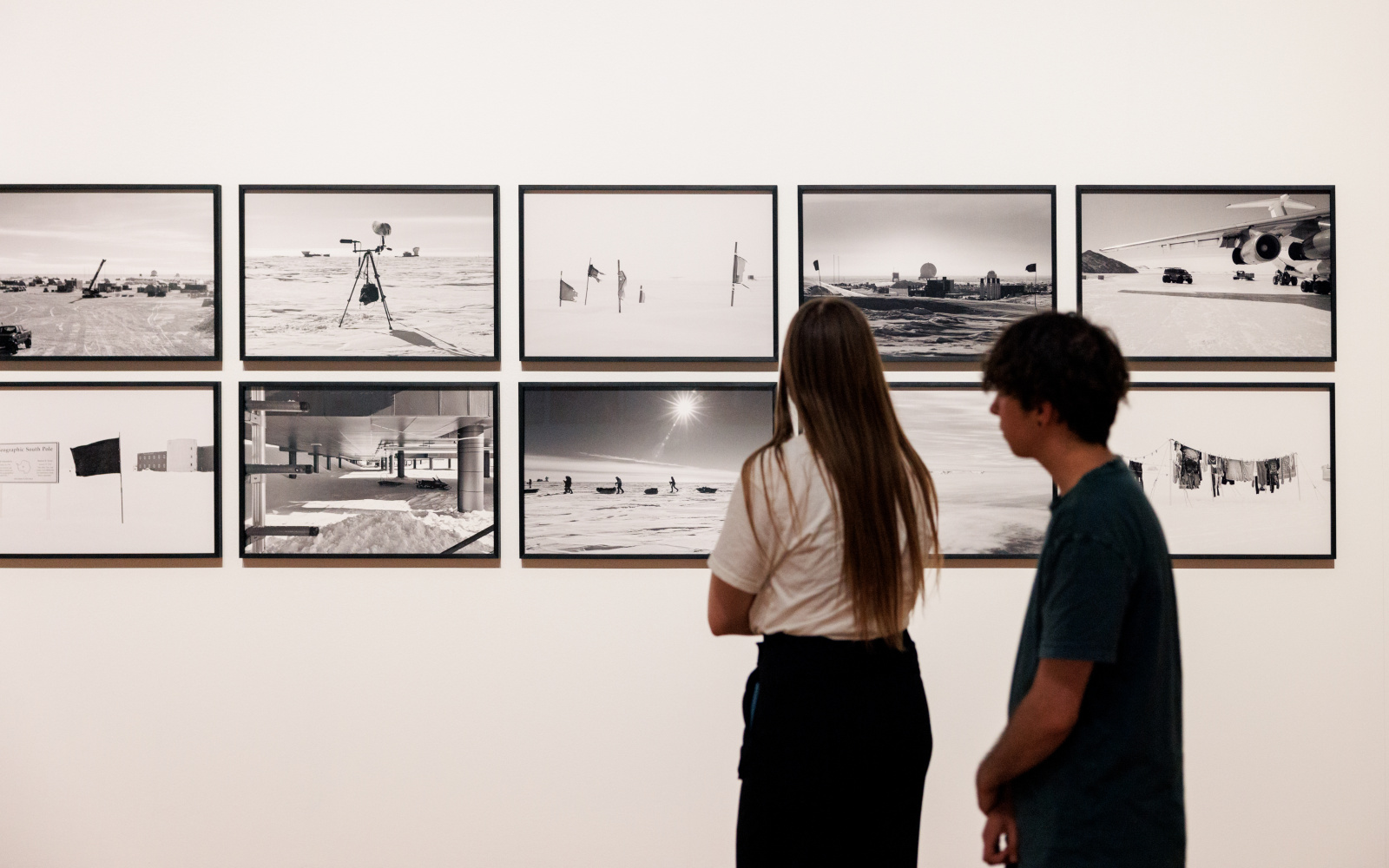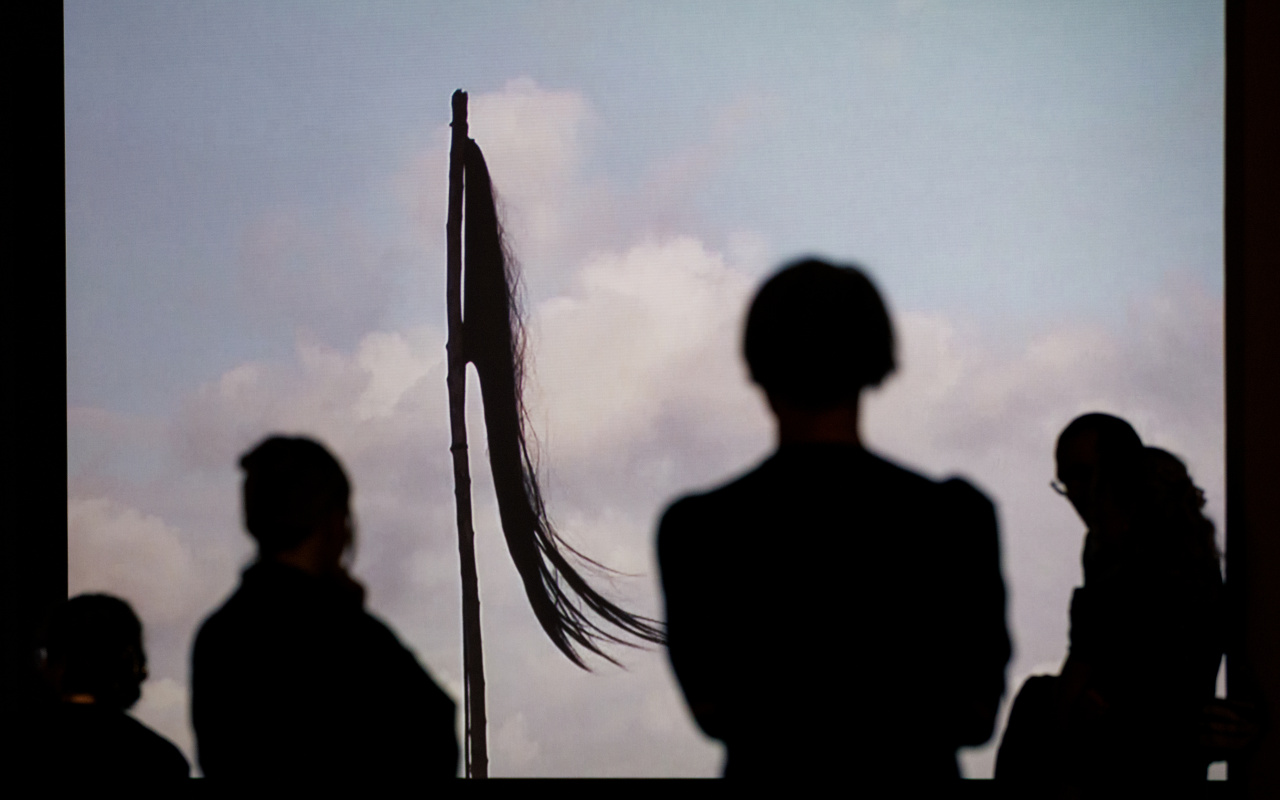- Exhibition
BLACK FLAGS. Edith Dekyndt, William Forsythe, Santiago Sierra
Sat, June 22 – Sun, October 06, 2024
- Location
- Atrium 8+9
- Entrance fee
- museum admission
The exhibition »BLACK FLAGS« engages with the motif of the black flag by means of three selected works, which can be interpreted in multiple ways, both aesthetically and politically.
The ambiguity of the three artistic gestures, which are associatively linked in the atriums of the ZKM, is intended to foster a change of perspective, urging us to reconsider the connecting elements within our society, given the manifold challenges of the present-day dividing our society. With the power of iconic gestures, »BLACK FLAGS« invites us to envision a future where we act with deliberate ethical consideration embedded within a complex ecological system.
With his installation »Black Flags« (2014), U.S. choreographer William Forsythe, whose archive has been housed at ZKM since 2023, has programmed a complex, contrapuntal choreography for two large black flags mounted on industrial robots. The capacity of the machines to execute the choreography indefinitely without any spatial or temporal deviation, transfers their analog choreographic task into the exceptional territory of the absolute, situating the choreography in an ideal, but machinic isolation.
The immersive photographic and sound installation »Black Flag« (2015) by Spanish concept and performance artist Santiago Sierra documents the raising of the black flag — the iconic and universal symbol of the anarchist movement — at the two most extreme points on Earth, the geographic North and South Poles. With this action, Sierra distances himself from national signs of colonization and colonialism. For the artist, raising the black flag stands for the antinational aspiration of political anarchism and its skepticism towards state structures.
The video »Ombre indigène, part 2, Martinique« (2014) by Brussels-based artist Edith Dekyndt shows a flag made of black hair. In the spirit of Édouard Glissant (1928–2011), the influential pioneer of postcolonial cultural theory who developed the concept of creolization and the term “archipelagic thinking,” Dekyndt's work addresses the mutual permeability and permanent development of cultures, languages, and things. This image of strands of hair blowing in the wind was recorded in Martinique not far from the grave of the Caribbean writer, philosopher, and essayist. Eight years after it had been created, in September 2022 it became known worldwide. The Iranian protest movement seized on the image as a symbol against the country’s mandatory headscarf, or hijab, and the video went viral on social media.
The exhibition is a collaboration with the A/POLITICAL Foundation and the Foundation Forsythe.
Under the Black Flag
Accompanying Program
The mediation and discussion program »Under the Black Flag: Talks & Gatherings« offers visitors the opportunity to explore the »BLACK FLAGS« exhibition from different perspectives. Together with experts from various fields, we want to share knowledge and experiences and initiate a dialogue about the different aesthetic, technological, and social aspects of the exhibition. The works on show serve as the associative starting point for an exchange of ideas that invites us to imagine a future in which we act consciously and ethically within a complex ecosystem.
Impressum/Legal Notice
Concept: Alistair Hudson
Curated by: Margit Rosen and Philipp Ziegler
Curatorial assistance: Laura Schmidt
Museum communication: Janine Burger, Alexandra Hermann
Technical project management: Felix Pausch
Scenography: Matthias Gommel
Registrar: Natascha Daher
Thanks to Becky Haghpanah-Shirwan and Julian Gabriel Richter

